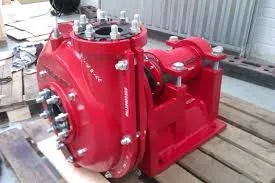Albanian
- Afrikaans
- Albanian
- Amharic
- Arabic
- Armenian
- Azerbaijani
- Basque
- Belarusian
- Bengali
- Bosnian
- Bulgarian
- Catalan
- Cebuano
- Corsican
- Croatian
- Czech
- Danish
- Dutch
- English
- Esperanto
- Estonian
- Finnish
- French
- Frisian
- Galician
- Georgian
- German
- Greek
- Gujarati
- Haitian Creole
- hausa
- hawaiian
- Hebrew
- Hindi
- Miao
- Hungarian
- Icelandic
- igbo
- Indonesian
- irish
- Italian
- Japanese
- Javanese
- Kannada
- kazakh
- Khmer
- Rwandese
- Korean
- Kurdish
- Kyrgyz
- Lao
- Latin
- Latvian
- Lithuanian
- Luxembourgish
- Macedonian
- Malgashi
- Malay
- Malayalam
- Maltese
- Maori
- Marathi
- Mongolian
- Myanmar
- Nepali
- Norwegian
- Norwegian
- Occitan
- Pashto
- Persian
- Polish
- Portuguese
- Punjabi
- Romanian
- Russian
- Samoan
- Scottish Gaelic
- Serbian
- Sesotho
- Shona
- Sindhi
- Sinhala
- Slovak
- Slovenian
- Somali
- Spanish
- Sundanese
- Swahili
- Swedish
- Tagalog
- Tajik
- Tamil
- Tatar
- Telugu
- Thai
- Turkish
- Turkmen
- Ukrainian
- Urdu
- Uighur
- Uzbek
- Vietnamese
- Welsh
- Bantu
- Yiddish
- Yoruba
- Zulu
Telephone: +86 13120555503
Email: frank@cypump.com
Nën . 18, 2024 17:20 Back to list
Chemical Booster Pump Solutions for Enhanced Fluid Transfer Efficiency and Reliability
Understanding Chemical Booster Pump Enhancing Efficiency in Fluid Transport
In the realm of industrial applications, ensuring the optimal transport of various fluids, especially chemicals, is fundamental to maintaining operations. One vital component that assists in this task is the chemical booster pump. This specialized equipment plays a crucial role in moving chemicals from one location to another, enhancing efficiency and ensuring safety throughout the process.
A chemical booster pump, as the name suggests, is designed to increase the pressure of a fluid, enabling it to flow through pipes or systems, particularly against resistance generated by friction or elevation changes. In industries such as petrochemicals, pharmaceuticals, and water treatment, the need for boosting the pressure of corrosive or viscous fluids is common, making these pumps indispensable.
The significance of chemical booster pumps lies in their capability to manage a range of chemicals, including acids, bases, solvents, and slurries
. They are constructed using materials that resist corrosion and degradation to ensure longevity and reliability. Common materials used in the construction of these pumps include stainless steel, plastic, and specialized alloys designed to withstand harsh environments.chemical booster pump

An essential aspect of chemical booster pumps is their operational design, which often includes features such as multi-stage impellers. This design allows for increased pressure output while maintaining a steady flow, which is crucial in processes requiring precise chemical handling. The ability to maintain flow rates while increasing pressure minimizes the risk of leakage and potential contamination, factors that are paramount in industries handling dangerous or sensitive substances.
Moreover, the integration of variable speed drives (VSD) in modern chemical booster pumps allows for enhanced control over the pumping process. VSDs enable operators to adjust the speed of the pump in real time, ensuring optimal performance according to the specific needs of the application. This not only increases efficiency but also reduces energy consumption, aligning with modern environmental standards and sustainability efforts.
Safety is another critical concern addressed by chemical booster pumps. These systems are often equipped with advanced monitoring and control features that provide real-time feedback on pressure and flow rates, allowing for immediate adjustments to prevent overpressure situations, leaks, or other hazardous incidents. Additionally, many booster pump systems are designed with fail-safes and emergency shut-off mechanisms to protect both personnel and equipment.
In summary, chemical booster pumps are essential pieces of equipment in industries that require the efficient and safe transport of various chemicals. Their ability to enhance fluid pressure while ensuring safety and operational efficiency cannot be overstated. As technology advances, these pumps continue to evolve, incorporating smart features that facilitate better control and energy efficiency, resulting in a more sustainable approach to chemical handling. Whether in a large-scale manufacturing plant or a smaller facility, understanding the importance and functionality of chemical booster pumps is crucial for anyone involved in fluid transport operations.
-
Custom Drilling Mud and Slurry Pump Supplier - High Efficiency, Tailored Solutions
NewsJun.10,2025
-
Supply Vertical Submersible Sewage Pump High-Efficiency WQ/QW Pumps Supplier
NewsJun.10,2025
-
Premium Sewage Ejection System & Pumps Efficient Waste Removal
NewsJun.09,2025
-
Premium Wholesale Slurry Pump Impellers Durable & Efficient Slurry Handling
NewsJun.09,2025
-
Top Sewage Pump Companies Durable Industrial Solutions for Efficiency
NewsJun.09,2025
-
Heavy Duty Slurry Pumps - OEM High Performance & Bulk Wholesale
NewsJun.09,2025










